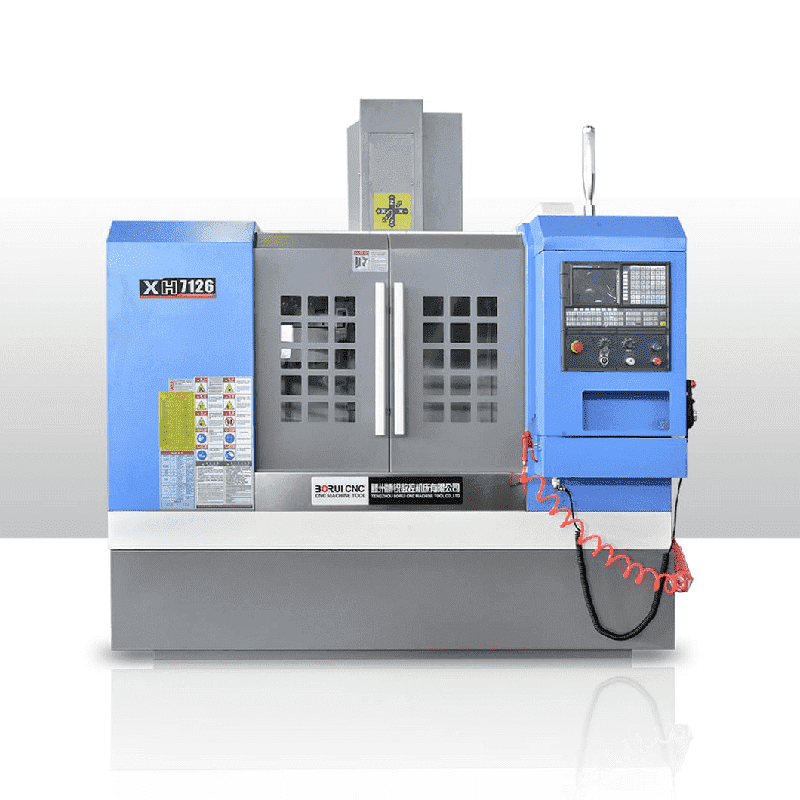
In recent years, CNC milling machines have been widely used in production. It is inevitable that abnormal machining accuracy will occur during use, which will affect the machining accuracy. There are four reasons for this problem:
- System parameters have changed or changed;
- The machine tool position loop is abnormal;
- The motor running state is abnormal, that is, the electrical and control parts are abnormal;
- Mechanical failures, such as lead screws, bearings, couplings and other components. In addition, the preparation of processing programs, the selection of tools and human factors may also lead to abnormal processing accuracy.
For the above common faults, we have carried out specific analysis and research
Changes Or Changes In System Parameters Lead To Abnormal Machining Accuracy
The system parameters mainly include machine tool feed unit, zero offset, backlash, etc. For example, SIEMENS, FANUC numerical control system, the feed unit has two kinds of metric system and inch system. During the repairing process of the machine tool, the changes of zero offset and clearance are often affected. After troubleshooting, it should be adjusted and modified in a timely manner. Only modify the parameters accordingly to meet the requirements of the machining accuracy of the machine tool.
Abnormal Machining Accuracy Caused By Mechanical Failure
If a fault occurs suddenly during the process of milling the mold, it is found that the Z-axis feed is abnormal, resulting in a cutting error of at least 0.3mm (Z-direction overcut), and each axis runs normally in the jog and MDI operation modes, and returns to the reference point Normal; there is no alarm prompt, the possibility of a hard fault in the electrical control part is eliminated, and the following aspects need to be checked:
- Check the machining program segment of the machine tool, whether there is any abnormality in the machining depth setting, tool length compensation, and the calling of the machining coordinate system (G54~G59).
- In the jog mode, move the Z-axis repeatedly, and diagnose whether the Z-direction movement sound is abnormal after seeing, touching and listening to its movement state.
- Check the Z-axis accuracy of the machine tool. Move the Z-axis with the hand pulse generator, and repeatedly measure the backlash value of the Z-axis with the dial indicator.
- Check the Z-axis link mechanism. After inspection, it was found that the tightening nut of the Z-axis screw had signs of loosening, which caused the Z-axis screw to move axially, resulting in errors. Tighten the nut and pay attention to the degree of tightness. If it is too loose, there will be backlash. If it is too tight, the screw will be overstressed and cause vibration. Modify the system parameter No. 1851 again to compensate the Z-axis backlash, so that the gap is eliminated
The electrical parameters of the machine tool are not optimized, and the motor runs abnormally
According to the analysis, there are two reasons for the failure, one is that the mechanical backlash is large; the other is that the X-axis motor works abnormally, and the motor jitters lead to lost steps. Use the parameter function of the FANUC system to debug the motor. First, the existing gap is compensated; the servo gain parameters and N pulse suppression function parameters are adjusted, the jitter of the X-axis motor is eliminated, and the machining accuracy of the machine tool returns to normal.
Abnormal Machining Accuracy Due To Abnormal Machine Tool Position Loop Or Improper Control Logic
The Y-axis is detected with a dial indicator, and it is found that the actual error of the mechanical position is basically the same as the error displayed by the digital display, so it is believed that the cause of the fault is that the repeated positioning error of the Y-axis is too large. Carefully check the backlash and positioning accuracy of the Y-axis, and re-compensate, but it has no effect. Therefore, it is suspected that there are problems with the grating ruler and system parameters, but why is there such a large error, but no corresponding alarm information appears? Further inspection found that the axis is a vertical axis. When the Y-axis is released, the headstock falls down, resulting in an over-tolerance.
The PLC logic control program of the machine tool has been modified, that is, when the Y axis is released, the Y axis is enabled and loaded first, and then the Y axis is released; when clamping, the axis is clamped first, and then the Y axis is released. The axis enable is removed. After adjustment, the machine failure is solved.




